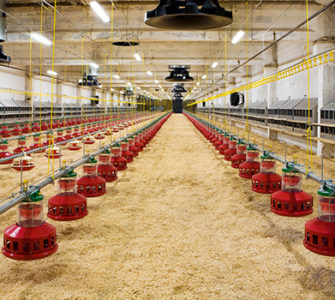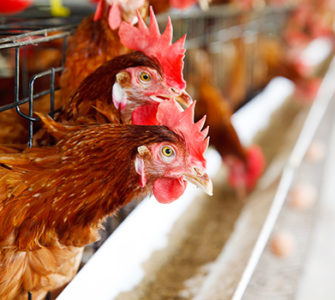Litter management can help control Salmonella Heidelberg
Ongoing studies to find ways of managing Salmonella Heidelberg loads in poultry litter have suggested that downtime is key to reducing the pathogen’s rates.
“We’ve been doing studies where we take litter from different downtimes, and we found that after 2 weeks of downtime, we see more than a 2-log reduction,” Ade Oladeinde, a research microbiologist with the USDA, told Poultry Health Today.
Used litter is less likely to carry antibiotic-resistant Salmonella, as well. “We’ve done a study where we raised some birds on used litter, and we raised some birds on fresh pine shavings,” he said.
“Overall, the abundance of Salmonella is about equal, but when you start looking at the amount that carries antibiotic resistance, in the fresh litter we found about 50% carrying antibiotic resistance.
“When we look at the used litter, we found less than 3% of the Salmonella acquiring antibiotic resistance.
“The definite answer is that, in the used litter, we see lower acquisition of antibiotic resistance,” Oladeinde added.
The USDA is actively researching S. Heidelberg while exploring ways to improve control of it on farm.
In 2014, the US experienced its largest foodborne outbreak of Salmonella linked to poultry farming, and the culprit was S. Heidelberg.
“Since then, we’ve been trying to understand what factors are responsible for S. Heidelberg surviving in poultry and causing such big outbreaks,” Oladeinde said.
Part of the reason is the strain’s invasiveness, which can be up to 35% — compared with just 3% to 5% in other strains such as S. Typhimurium or S. Kentucky.
“That’s why S. Heidelberg is a big one when it comes to outbreaks because it can cause more diseases than other serotypes,” he explained.
Most of the outbreaks have been traced back to infected chicken, although there is an example of it also affecting cattle in an outbreak that also had human fatalities.
Antibiotic resistance
One recent piece of work examined S. Heidelberg and, in particular, how strains of it can develop antibiotic resistance.
The team took strains that were not resistant to antibiotics and introduced them to poultry production.
Some work introduced those strains to litter — so-called inoculation studies — while others challenged birds by directly giving them Salmonella.
“What we found was very striking,” Oladeinde said. “When we do the studies with the birds, we do not use any antibiotics, but what we found was that when we orally gavage the birds with S. Heidelberg, 50% of the isolates that we recover after 2 weeks from the birds all acquire multi-drug resistance.
“It suggests that simply removing antibiotics from poultry production may not be enough to eliminate antibiotic-resistant strains of Salmonella.”
Posted on June 28, 2021

















